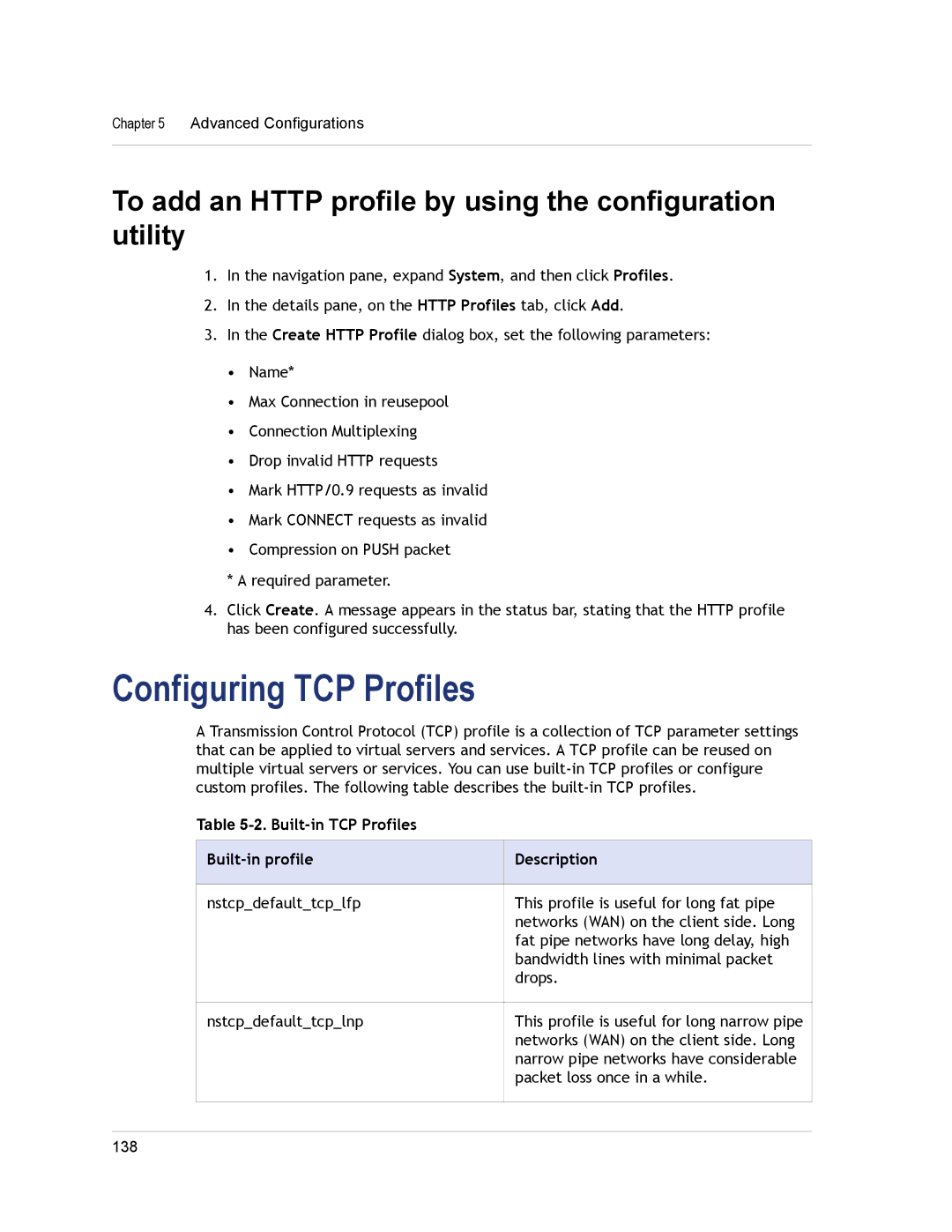
Chapter 5 Advanced Configurations
To add an HTTP profile by using the configuration utility
1.In the navigation pane, expand System, and then click Profiles.
2.In the details pane, on the HTTP Profiles tab, click Add.
3.In the Create HTTP Profile dialog box, set the following parameters:
•Name*
•Max Connection in reusepool
•Connection Multiplexing
•Drop invalid HTTP requests
•Mark HTTP/0.9 requests as invalid
•Mark CONNECT requests as invalid
•Compression on PUSH packet
* A required parameter.
4.Click Create. A message appears in the status bar, stating that the HTTP profile has been configured successfully.
Configuring TCP Profiles
A Transmission Control Protocol (TCP) profile is a collection of TCP parameter settings that can be applied to virtual servers and services. A TCP profile can be reused on multiple virtual servers or services. You can use
Table 5-2. Built-in TCP Profiles
| Description | |
|
|
|
nstcp_default_tcp_lfp | This profile is useful for long fat pipe | |
| networks (WAN) on the client side. Long | |
| fat pipe networks have long delay, high | |
| bandwidth lines with minimal packet | |
| drops. | |
|
|
|
nstcp_default_tcp_lnp | This profile is useful for long narrow pipe | |
| networks (WAN) on the client side. Long | |
| narrow pipe networks have considerable | |
| packet loss once in a while. | |
|
|
|
|
|
|
138
